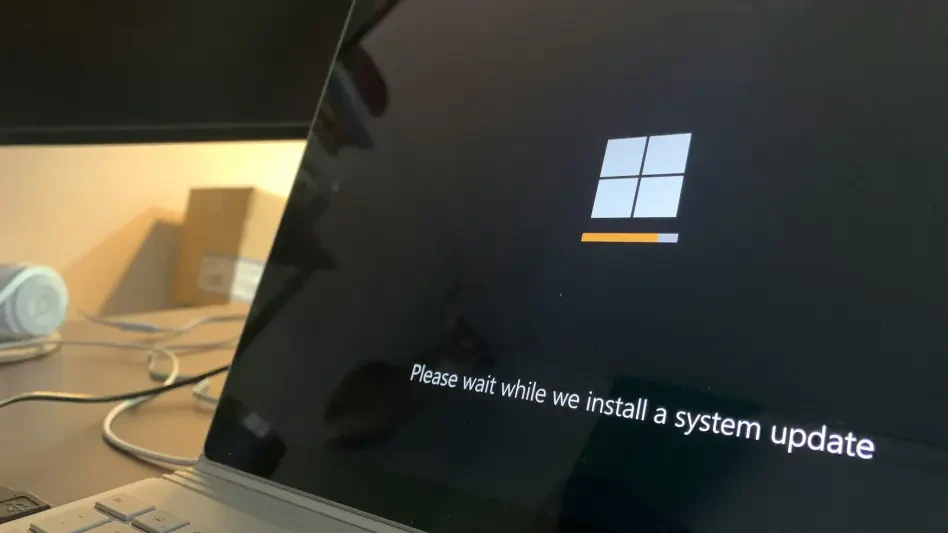The digital landscape’s constant evolution has given rise to sophisticated cyber threats, with ransomware attacks becoming a formidable concern for organizations worldwide. A salient example involves the recent exploitation of a zero-day Windows vulnerability by the notorious cybercrime group known as Balloonfly. This group has been actively targeting systems to gain unauthorized access and escalate privileges, thereby bypassing conventional security measures. The case underscores the growing audacity and technological prowess of ransomware operators, who are increasingly turning to zero-day exploits as a primary method of attack. This trend is evidenced by their tactical use of a flaw in Windows’ Common Log File System (CLFS).
Exploiting Zero-Day Vulnerabilities
CLFS Driver Vulnerability
The Windows vulnerability exploited by ransomware groups, specifically by Balloonfly, is identified as CVE-2025-29824. This zero-day vulnerability resides in the Common Log File System (CLFS) driver, making it a potent tool for malicious actors looking to escalate their privileges within a targeted system. By exploiting this flaw, attackers can perform unauthorized actions at the SYSTEM level, essentially gaining the highest level of access within a Microsoft Windows environment. This level of access enables attackers to bypass traditional security defenses effectively and carry out their objectives unimpeded.
The vulnerability’s exploitation involves manipulating a race condition between interacting threads in the CLFS driver. Attackers use several coordinated techniques to alter arbitrary kernel memory and escalate privileges. This is accomplished through orchestrated use of the CloseHandle() and DeviceIoControl() operations. The management of kernel memory becomes flawed due to the race condition, allowing the attacker to execute SYSTEM-level tasks. Such capabilities make this vulnerability an attractive target for ransomware groups aiming to inflict maximum damage with minimal resistance from standard security protocols. The use-after-free condition inherent in this exploitation method represents a sophisticated understanding of Windows internals by these cybercriminals.
Tactics and Evidence
To further advance their malicious objectives, Balloonfly’s attackers have crafted an intricate methodology that evolves beyond the initial exploitation. The attack’s framework features deliberate orchestration to execute a set of complex malicious activities. The process begins with injecting a malicious DLL into trusted processes such as winlogon.exe. This DLL plays a pivotal role in advancing the attack, facilitating the injection of scripts that lead to comprehensive system manipulation. Registry hives are dumped, and hidden administrative users are created, expanding the attackers’ access and persistence within the network.
Material evidence of the attack’s execution has been identified through the creation of specific files that corroborate the exploit’s seriousness. Notable among these are PDUDrv.blf, a CLFS base log file, and clssrv.inf, the aforementioned malicious DLL. These components are meticulously crafted to perform advanced actions such as registry tampering and forensic trace eradication. Additionally, batch files like servtask.bat and cmdpostfix.bat further the attack by manipulating system services and cleaning up traces, respectively. These elements demonstrate the attackers’ adeptness at covering their tracks and ensuring sustained infiltration, ultimately showcasing the methodical precision of Balloonfly’s operations.
Attack Tools and Strategies
Disguised Cyber Tools
In their quest to remain undetected, attackers utilize sophisticated tactics to disguise their tools as legitimate applications, often mimicking reputable software from well-known companies. An example of this strategy involves renaming malicious tools to mimic Palo Alto software, exploiting the trust associated with such a recognized brand. By masquerading their malware as legitimate applications, cybercriminals aim to bypass initial scrutiny and infiltrate systems with ease. This deceptive approach allows attackers to fulfill their data extraction objectives more effectively, especially from key environments like Active Directory, where they can map targeted networks.
To bolster their reconnaissance efforts, attackers leverage tools designed to extract and analyze data from Active Directory environments. PowerShell scripts play a significant role in this strategy, executing commands to retrieve detailed network configurations and identify potential points for further penetration. These reconnaissance efforts provide the attackers with strategic insights into the network’s architecture, enabling precision strikes in subsequent stages. By employing such advanced techniques, ransomware groups demonstrate a heightened understanding of enterprise security infrastructures, subverting defenses with remarkable sophistication.
Fileless and File-Based Exploits
Ransomware groups exhibit a flexible approach to exploiting vulnerabilities, adapting their methods to suit distinct operational goals. While Balloonfly’s approach prominently features file-based methodologies, other groups like Storm-2460 adopt fileless exploitation techniques, showcasing the adaptability and range of these cybercriminal entities. Storm-2460’s use of the PipeMagic malware exemplifies a fileless approach, deploying malicious payloads directly in memory through processes like dllhost.exe. This method provides an added layer of stealth by minimizing file footprint and reducing opportunities for detection.
Both file-based and fileless techniques underscore the diversity in offensive strategies employed by cybercriminals. Fileless exploits offer enhanced stealth capabilities by eliminating the need for tangible files, focusing instead on in-memory attacks that challenge conventional security measures. Meanwhile, file-based attacks provide the attackers a tangible control method over infected systems, with a suite of known tools to manipulate. By leveraging the same vulnerability through varied methodologies, these groups exhibit the ability to adapt to specific operational requirements and evade detection.
Industry Response and Recommendations
Patch Management and Defense
The industry’s response to these zero-day exploits has been swift and robust, with major software vendors like Microsoft leading initiatives to counteract such threats. Issuance of patches to address vulnerabilities like CVE-2025-29824 represents a critical step in enhancing system resilience. By deploying these updates promptly, organizations can mitigate risks associated with these high-severity vulnerabilities. Security experts underscore the importance of maintaining up-to-date patch management systems, ensuring vulnerabilities are addressed before they can be exploited by malicious actors.
Beyond patching, organizations are encouraged to adopt comprehensive security measures to fortify defenses against these advanced threats. This includes auditing system tasks for unauthorized changes, closely monitoring PowerShell logs for anomalies, and implementing rigorous access controls. Such proactive strategies empower organizations to detect and respond to suspicious activities effectively, thereby minimizing potential damage and disruption. By fostering a culture of vigilance and security awareness, enterprises can enhance their resilience to emerging ransomware tactics and sustain operational integrity.
Preventing Lateral Movement
The digital realm is ever-evolving, leading to increasingly sophisticated cyber threats. A major concern today is ransomware attacks, which have become a serious issue for organizations globally. A pertinent example of this threat is the recent exploitation of a zero-day vulnerability in Windows by Balloonfly, a well-known cybercrime group. This group has been aggressively targeting systems to gain unauthorized access and escalate privileges, effectively circumventing standard security protocols. This incident highlights the growing boldness and technological sophistication of ransomware operators. They are now favoring zero-day exploits as a primary attack strategy, showcasing their advanced technical capabilities. A significant trend is their tactical exploitation of a flaw in Windows’ Common Log File System (CLFS). This is a prime indicator of how cybercriminals are adapting and refining their methods, underscoring the urgent need for enhanced cybersecurity measures to safeguard against such evolving threats in the digital space.








